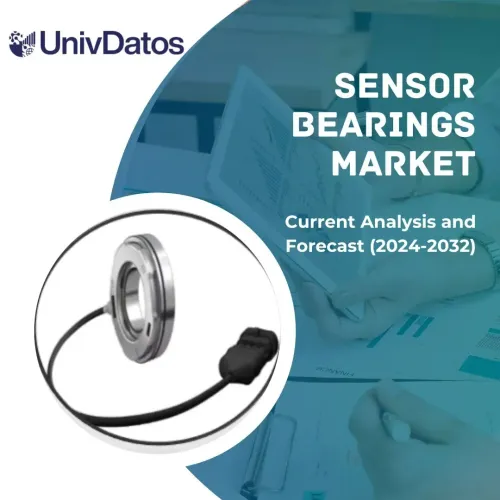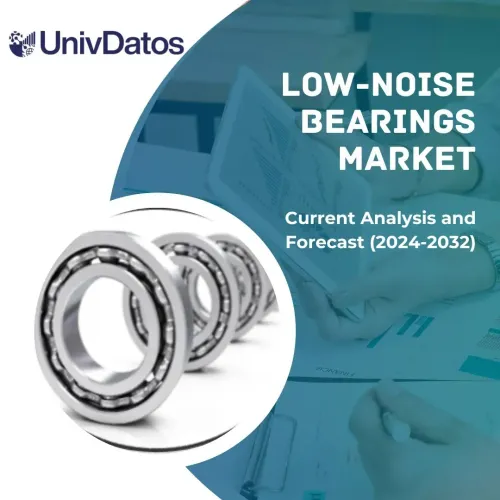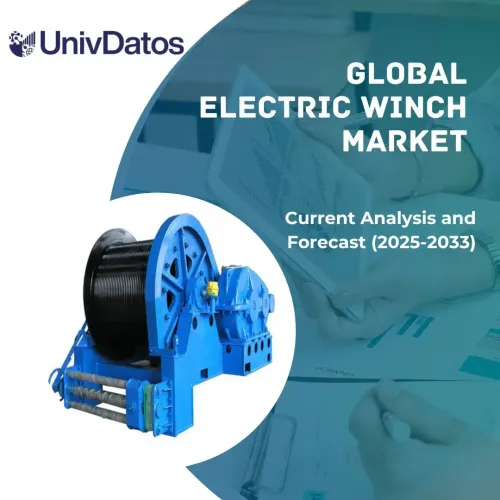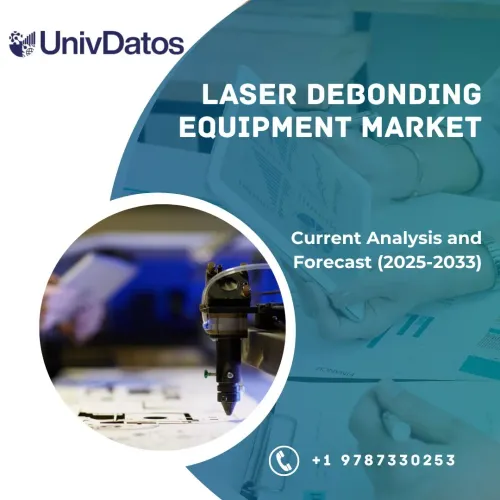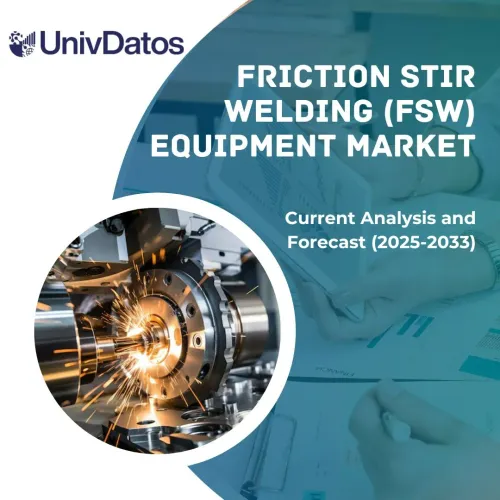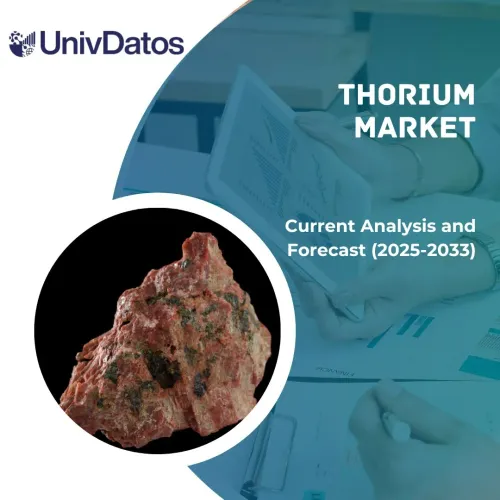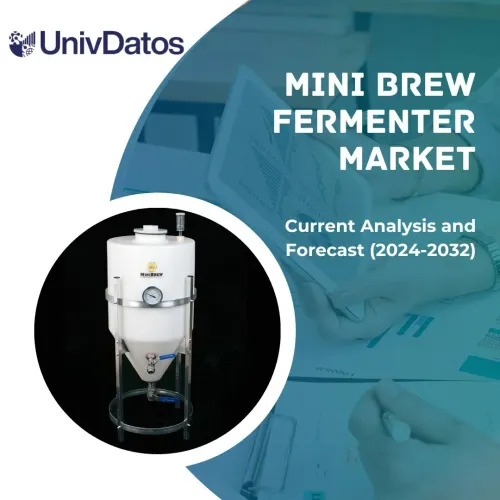- Home
- Chi siamo
- Settore
- Servizi
- Lettura
- Contattaci
Mercato del riciclo dei metalli delle terre rare: analisi attuale e previsioni (2023-2030)
Enfasi sulla fonte (scarti di magneti permanenti, lampade fluorescenti, batterie al nichel-metallo idruro, rifiuti industriali ed elettronici), tecnologia (idrometallurgia, pirometallurgia), applicazione (catalizzatori, vetro, lucidatura, conversione leghe metalliche, magneti permanenti, fosfori, ceramiche, altri) e regione/paese
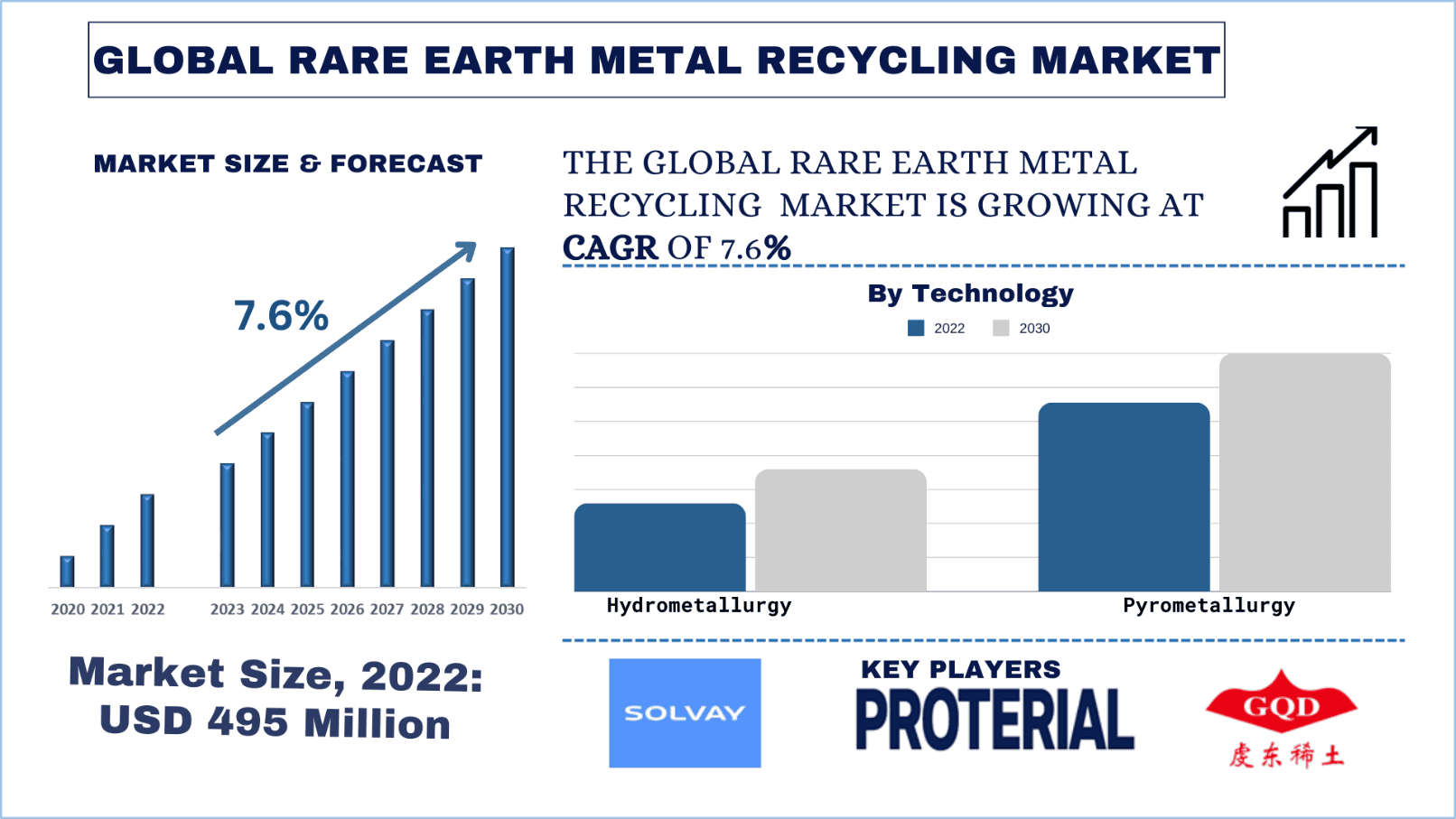
Il mercato del riciclo dei metalli delle terre rare è stato valutato a 495 milioni nel 2022 e si prevede che crescerà a un ritmo costante di circa il 7,6% nel periodo di previsione (2023-2030).
Si prevede che il mercato del riciclo dei metalli delle terre rare assisterà a una crescita significativa nei prossimi anni, trainata dalla crescente domanda di tecnologie per l'energia pulita come turbine eoliche e veicoli elettrici, che dipendono fortemente dai magneti delle terre rare. Il riciclo di questi magneti comporta il riciclo dei metalli delle terre rare, il che contribuisce ulteriormente alla sostenibilità riducendo la dipendenza dalle risorse vergini, fondamentali per la transizione verso l'energia verde. Inoltre, la disponibilità di elementi delle terre rare è limitata a un numero finito di risorse con una distribuzione globale irregolare. Quindi, per frenare questo, il riciclo offre un modo per garantire un approvvigionamento stabile e ridurre la dipendenza da fonti esterne potenzialmente inaffidabili.
Alcuni dei principali attori che operano nel mercato sono Solvay, Proterial, Ltd, REEGENERATE PTY LTD, Lynas, GanZhou QianDong Rare Earths Group, Mitsubishi Chemical Group Corporation., Nissan Motor Co., Ltd., Geomega Resources Inc., Shenghe Resources Holding Co., Ltd. e BASF SE. Diverse fusioni e acquisizioni, insieme a partnership, sono state intraprese da questi attori per facilitare i clienti con prodotti/tecnologie hi-tech e innovative.
Approfondimenti presentati nel rapporto
“Tra le fonti, il segmento delle batterie al nichel-metallo idruro ha detenuto una quota significativa nel 2022.”
In base alla fonte, il mercato è segmentato in scarti di magneti permanenti, lampade fluorescenti, batterie al nichel-metallo idruro, rifiuti industriali ed elettronici. Tra questi, il segmento delle batterie al nichel-metallo idruro detiene una quota significativa nel mercato del riciclo dei metalli delle terre rare perché le batterie NiMH sono comunemente utilizzate in applicazioni come l'elettronica portatile, gli utensili elettrici e persino alcuni veicoli ibridi elettrici (HEV) con più di un decennio di età. Ciò indica il crescente flusso di rifiuti delle batterie NiMH man mano che raggiungono la fine del ciclo di vita, fornendo una materia prima costante per il riciclo. Inoltre, rispetto ad alcune tecnologie di batterie più recenti, il riciclo delle batterie NiMH esiste da più tempo grazie ai metodi idrometallurgici già consolidati utilizzati per estrarre gli elementi delle terre rare dalle batterie esauste.
“Tra le applicazioni, il segmento delle leghe per batterie ha registrato una crescita significativa nel mercato. ’’
In base all'applicazione, il mercato è segmentato in magneti permanenti, catalizzatori, leghe per batterie, metallurgia e leghe, polvere e additivi per la lucidatura del vetro, fosfori, ceramiche, pigmenti e smalti e altri. Tra questi, il segmento delle leghe per batterie ha una crescita significativa nel mercato del riciclo dei metalli delle terre rare perché le batterie agli ioni di litio sono diventate un componente cruciale nell'elettronica e nei veicoli elettrici (EV), che richiedono ulteriormente elementi delle terre rare specifici come litio, cobalto e nichel per la loro produzione. Poiché la domanda di veicoli elettrici ed elettronica portatile è in aumento, anche la necessità di questi metalli delle terre rare è in crescita. Le leghe per batterie concentrano questi elementi preziosi, il che le rende un obiettivo primario per il riciclo.

“Il Nord America detiene una quota significativa nel mercato del riciclo dei metalli delle terre rare nel 2022.”
Il Nord America è la regione che ha un settore manifatturiero ben consolidato che comprende vari prodotti come l'elettronica, le turbine eoliche e i veicoli elettrici che forniscono una grande quantità di materiali di origine per il riciclo dei metalli delle terre rare. Inoltre, le normative ambientali nella regione del Nord America in paesi come gli Stati Uniti sono spesso più rigorose rispetto ad altre regioni. Questo può rendere l'estrazione mineraria tradizionale meno attraente e incentivare le aziende a esplorare il riciclo come alternativa più sostenibile. Istituti di ricerca e società private in Nord America sono in prima linea nello sviluppo di tecnologie nuove e migliorate per il riciclo degli elementi delle terre rare. Questi progressi possono rendere il processo più efficiente, conveniente ed ecologico.

Copertura del rapporto sul mercato del riciclo dei metalli delle terre rare

Motivi per acquistare questo rapporto:
- Lo studio include la definizione delle dimensioni del mercato e l'analisi delle previsioni convalidate da esperti chiave del settore autenticati.
- Il rapporto presenta una rapida panoramica delle prestazioni complessive del settore a colpo d'occhio.
- Il rapporto copre un'analisi approfondita dei principali attori del settore con particolare attenzione ai dati finanziari chiave aziendali, ai portafogli di prodotti, alle strategie di espansione e agli sviluppi recenti.
- Esame dettagliato dei fattori trainanti, dei vincoli, delle tendenze chiave e delle opportunità prevalenti nel settore.
- Lo studio copre in modo completo il mercato in diversi segmenti.
- Analisi approfondita a livello regionale del settore.
Opzioni di personalizzazione:
Il mercato globale del riciclo dei metalli delle terre rare può essere ulteriormente personalizzato in base alle esigenze o a qualsiasi altro segmento di mercato. Oltre a ciò, UMI capisce che potresti avere le tue esigenze aziendali, quindi non esitare a metterti in contatto con noi per ottenere un rapporto che soddisfi completamente le tue esigenze.
Indice
Metodologia di ricerca per l'analisi del mercato del riciclo dei metalli delle terre rare(2022-2030)
L'analisi del mercato storico, la stima del mercato attuale e la previsione del mercato futuro del mercato globale del riciclo dei metalli delle terre rare sono stati i tre passaggi principali intrapresi percrearee analizzare l'adozione del riciclo dei metalli delle terre rare nelle principali regioni a livello globale. È stata condotta un'esauriente ricerca secondaria per raccogliere i numeri storici del mercato e stimare le dimensioni attuali del mercato. In secondo luogo, per convalidare questi approfondimenti, sono state prese in considerazione numerose scoperte e ipotesi. Inoltre, sono state condotte esaurienti interviste primarie, con esperti del settore lungo l'intera catena del valore del mercato globale del riciclo dei metalli delle terre rare. Successivamente all'assunzione e alla convalida dei numeri di mercato attraverso interviste primarie, abbiamo impiegato un approccio top-down/bottom-up per prevedere le dimensioni complete del mercato. Successivamente, sono stati adottati metodi di scomposizione del mercato e di triangolazione dei dati per stimare e analizzare le dimensioni del mercato dei segmenti e dei sottosegmenti del settore di riferimento. La metodologia dettagliata è spiegata di seguito:
Analisi delle dimensioni storiche del mercato
Fase 1: studio approfondito delle fonti secondarie:
È stato condotto uno studio secondario dettagliato per ottenere le dimensioni storiche del mercato del mercato del riciclo dei metalli delle terre rare attraverso fonti interne all'azienda comerelazioni annuali e rendiconti finanziari, presentazioni sulle prestazioni, comunicati stampa, ecc.e fonti esterne tra cuiriviste, notizie e articoli, pubblicazioni governative, pubblicazioni dei concorrenti, relazioni settoriali, database di terze parti e altre pubblicazioni credibili.
Fase 2: Segmentazione del mercato:
Dopo aver ottenuto le dimensioni storiche del mercato del mercato del riciclo dei metalli delle terre rare, abbiamo condotto un'analisi secondaria dettagliata per raccogliere approfondimenti storici del mercato e quote per diversi segmenti e sottosegmenti per le principali regioni. I segmenti principali sono inclusi nel rapporto come fonte, tecnologia e applicazione. Ulteriori analisi a livello di paese sono state condotte per valutare l'adozione complessiva dei modelli di test in quella regione.
Fase 3: analisi dei fattori:
Dopo aver acquisito le dimensioni storiche del mercato di diversi segmenti e sottosegmenti, abbiamo condotto un'analisi dettagliataanalisi dei fattoriper stimare le dimensioni attuali del mercato del mercato del riciclo dei metalli delle terre rare. Inoltre, abbiamo condotto un'analisi dei fattori utilizzando variabili dipendenti e indipendenti come la crescente domanda di energia rinnovabile. È stata condotta un'analisi approfondita degli scenari dal lato della domanda e dell'offerta, considerando le principali partnership, fusioni e acquisizioni, l'espansione del business e i lanci di prodotti nel settore del mercato del riciclo dei metalli delle terre rare in tutto il mondo.
Stima e previsione delle dimensioni attuali del mercato
Dimensioni attuali del mercato:Sulla base degli approfondimenti attuabili dei 3 passaggi precedenti, siamo giunti alle dimensioni attuali del mercato, ai principali attori nel mercato globale del riciclo dei metalli delle terre rare e alle quote di mercato dei segmenti. Tutte le quote percentuali richieste, le divisioni e le scomposizioni del mercato sono state determinate utilizzando l'approccio secondario sopra menzionato e sono state verificate attraverso interviste primarie.
Stima e Previsioni:Per la stima e le previsioni di mercato, sono stati assegnati pesi a diversi fattori, tra cui driver e tendenze, vincoli e opportunità disponibili per gli stakeholder. Dopo aver analizzato questi fattori, sono state applicate tecniche di previsione pertinenti, ovvero l'approccio top-down/bottom-up, per arrivare alle previsioni di mercato per il 2028 per diversi segmenti e sotto-segmenti nei principali mercati a livello globale. La metodologia di ricerca adottata per stimare le dimensioni del mercato comprende:
- Le dimensioni del mercato del settore, in termini di ricavi (USD) e il tasso di adozione del mercato del riciclaggio dei metalli delle terre rare nei principali mercati a livello nazionale
- Tutte le quote percentuali, le suddivisioni e le ripartizioni dei segmenti e sotto-segmenti di mercato
- Principali attori nel mercato globale del riciclaggio dei metalli delle terre rare in termini di prodotti offerti. Inoltre, le strategie di crescita adottate da questi attori per competere nel mercato in rapida crescita.
Validazione Dimensioni e Quote di Mercato
Ricerca Primaria:Sono stati condotti colloqui approfonditi con i Key Opinion Leader (KOL) tra cui Top Level Executive (CXO/VP, Responsabile Vendite, Responsabile Marketing, Responsabile Operativo, Responsabile Regionale, Responsabile Nazionale, ecc.) in tutte le principali regioni. I risultati della ricerca primaria sono stati quindi riassunti e sono state eseguite analisi statistiche per dimostrare l'ipotesi dichiarata. Gli input della ricerca primaria sono stati consolidati con i risultati secondari, trasformando così le informazioni in approfondimenti utili.
Suddivisione dei Partecipanti Primari nelle Diverse Regioni

Ingegneria di Mercato
La tecnica di triangolazione dei dati è stata impiegata per completare la stima complessiva del mercato e per arrivare a numeri statistici precisi per ogni segmento e sotto-segmento del mercato globale del riciclaggio dei metalli delle terre rare. I dati sono stati suddivisi in diversi segmenti e sotto-segmenti dopo aver studiato vari parametri e tendenze nelle aree del tipo di veicolo e della tecnologia nel mercato globale del riciclaggio dei metalli delle terre rare.
L'obiettivo principale dello Studio Globale sul Mercato del Riciclaggio dei Metalli delle Terre Rare
Le attuali e future tendenze del mercato globale del riciclaggio dei metalli delle terre rare sono state individuate nello studio. Gli investitori possono ottenere informazioni strategiche per basare la loro discrezione per gli investimenti sull'analisi qualitativa e quantitativa eseguita nello studio. Le attuali e future tendenze del mercato hanno determinato l'attrattiva complessiva del mercato a livello regionale, fornendo una piattaforma per il partecipante industriale per sfruttare il mercato inesplorato per beneficiare di un vantaggio del first-mover. Altri obiettivi quantitativi degli studi includono:
- Analizzare le dimensioni attuali e previste del mercato del riciclaggio dei metalli delle terre rare in termini di valore (USD). Inoltre, analizzare le dimensioni attuali e previste del mercato dei diversi segmenti e sotto-segmenti.
- I segmenti nello studio includono aree come fonte, tecnologia e applicazione.
- Definire e analizzare il quadro normativo per il riciclaggio dei metalli delle terre rare
- Analizzare la catena del valore coinvolta con la presenza di vari intermediari, analizzando anche i comportamenti dei clienti e dei concorrenti del settore.
- Analizzare le dimensioni attuali e previste del mercato del riciclaggio dei metalli delle terre rare per la regione principale.
- I principali paesi delle regioni studiate nel rapporto includono Asia Pacifico, Europa, Nord America e Resto del mondo
- Profili aziendali del mercato del riciclaggio dei metalli delle terre rare e le strategie di crescita adottate dagli attori del mercato per sostenere il mercato in rapida crescita.
- Analisi approfondita a livello regionale del settore.
Domande frequenti FAQ
Q1: Qual è l'attuale dimensione del mercato e il potenziale di crescita del mercato globale del riciclo dei metalli delle terre rare?
Q2: Quali sono i fattori trainanti per la crescita del mercato globale del riciclo dei metalli delle terre rare?
Q3: Quale segmento detiene la quota maggiore del mercato globale del riciclo dei metalli delle terre rare per applicazione?
Q4: Quale regione dominerà il mercato globale del riciclo dei metalli delle terre rare?
Q5: Chi sono i principali attori che operano nel mercato globale del riciclo dei metalli delle terre rare?
Correlati Report
I clienti che hanno acquistato questo articolo hanno acquistato anche



